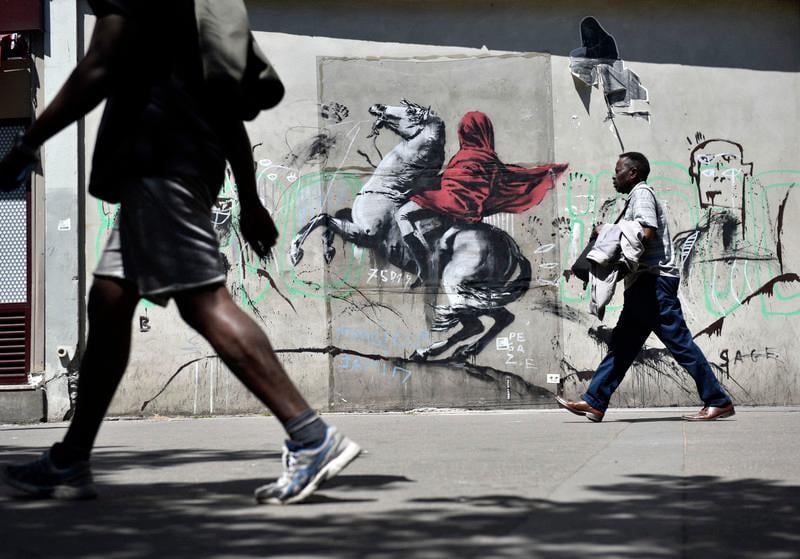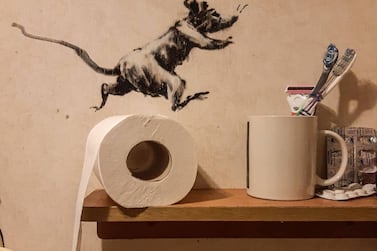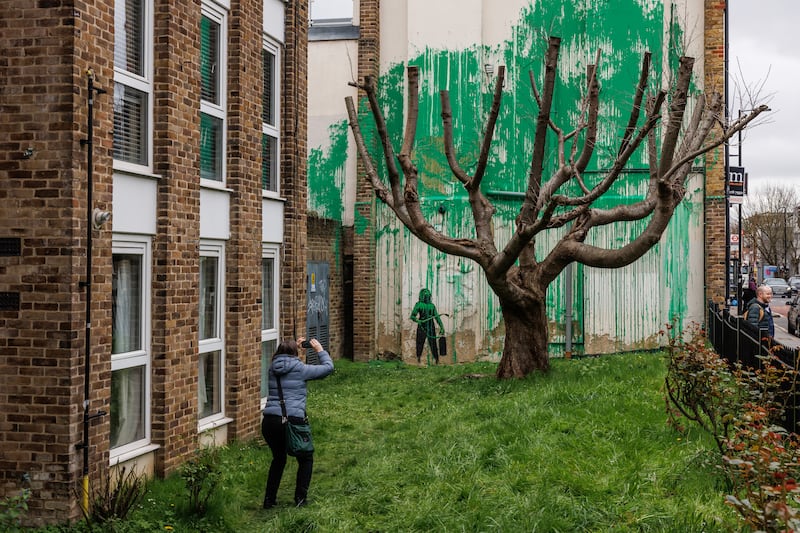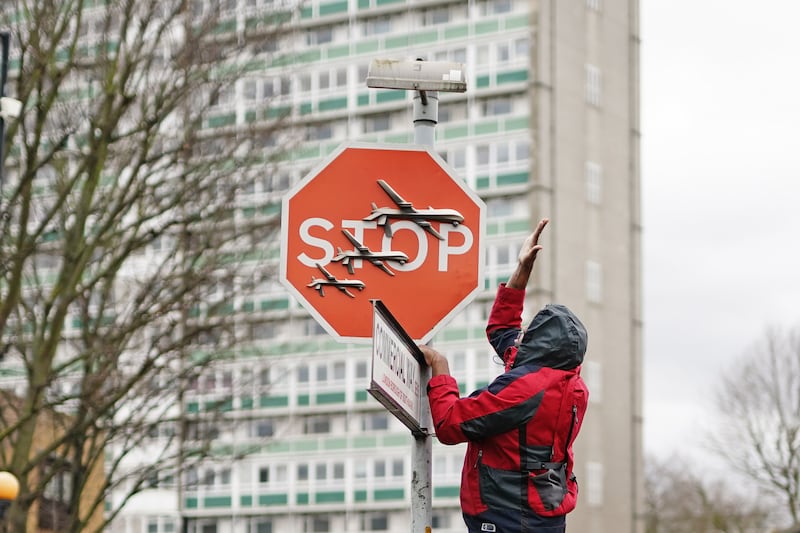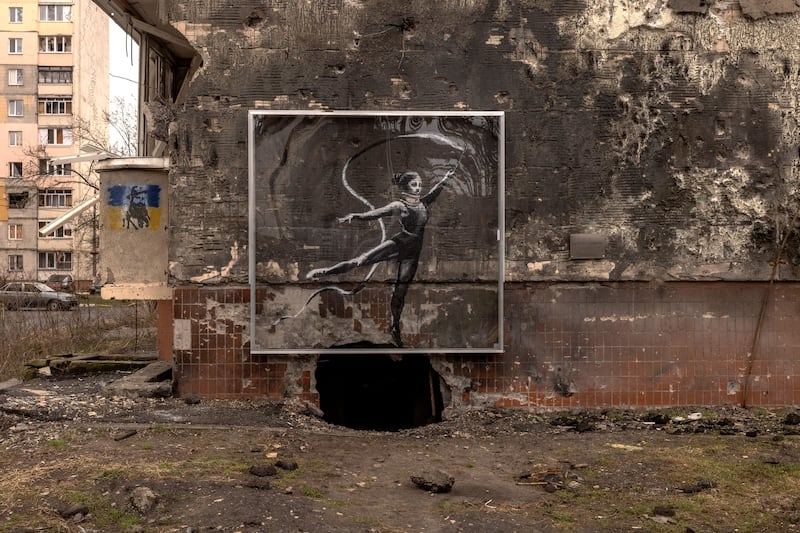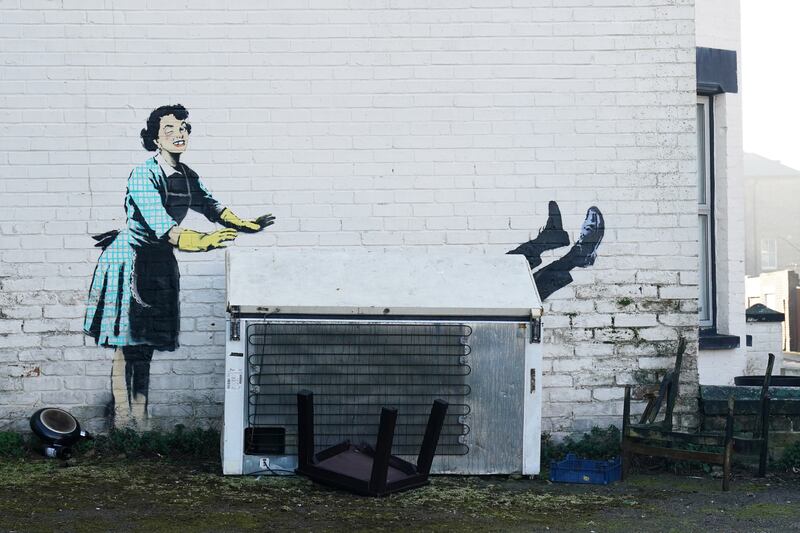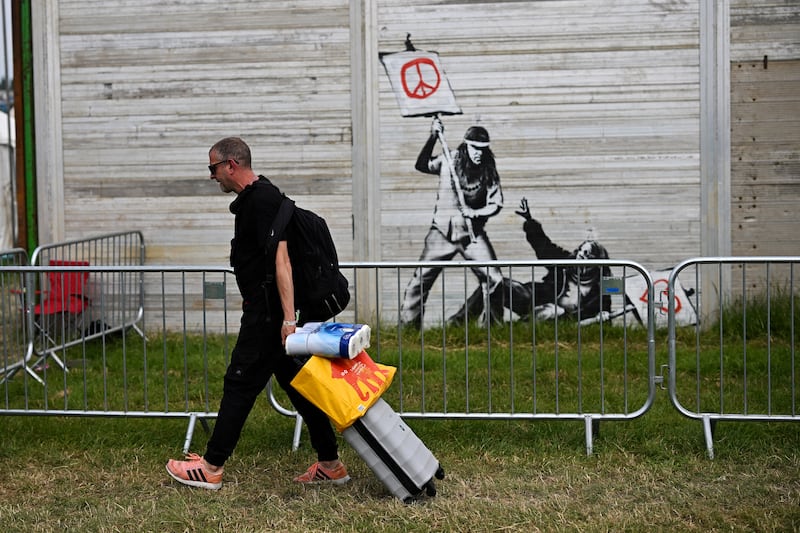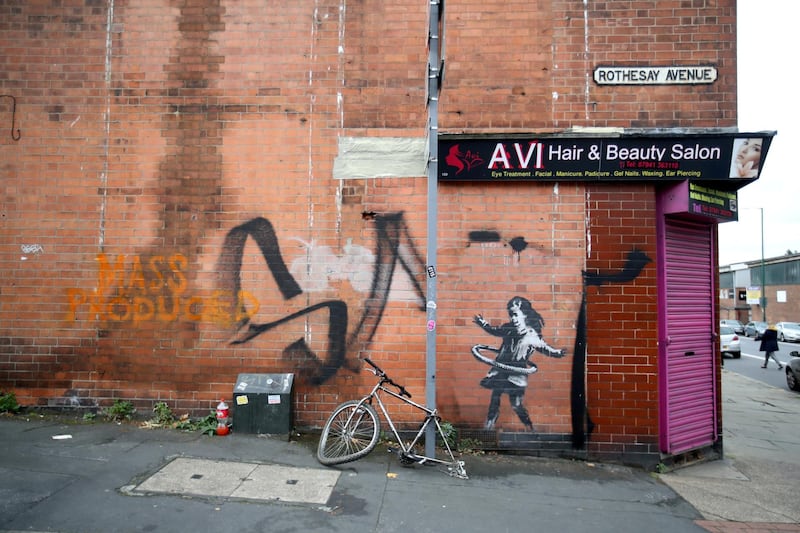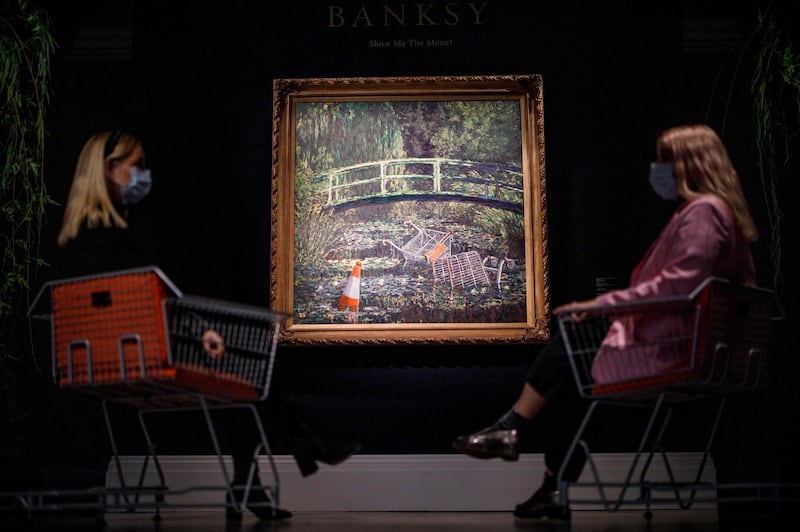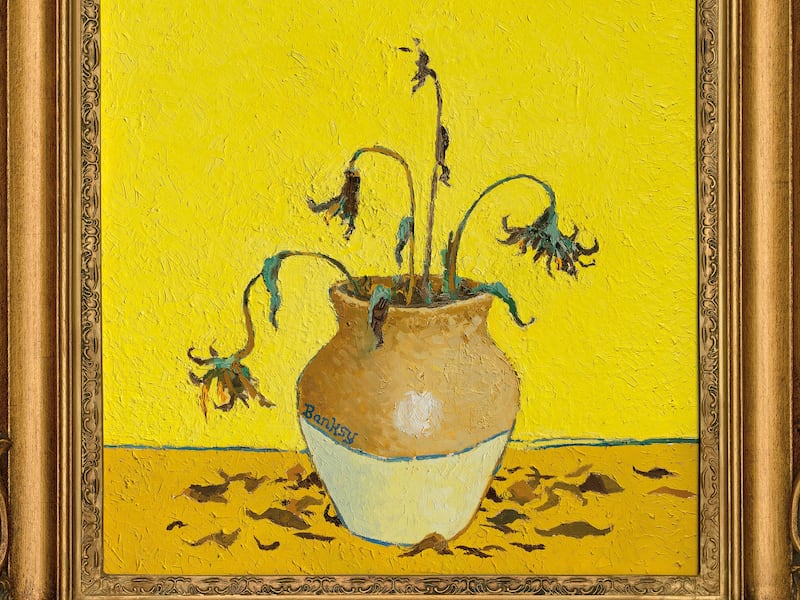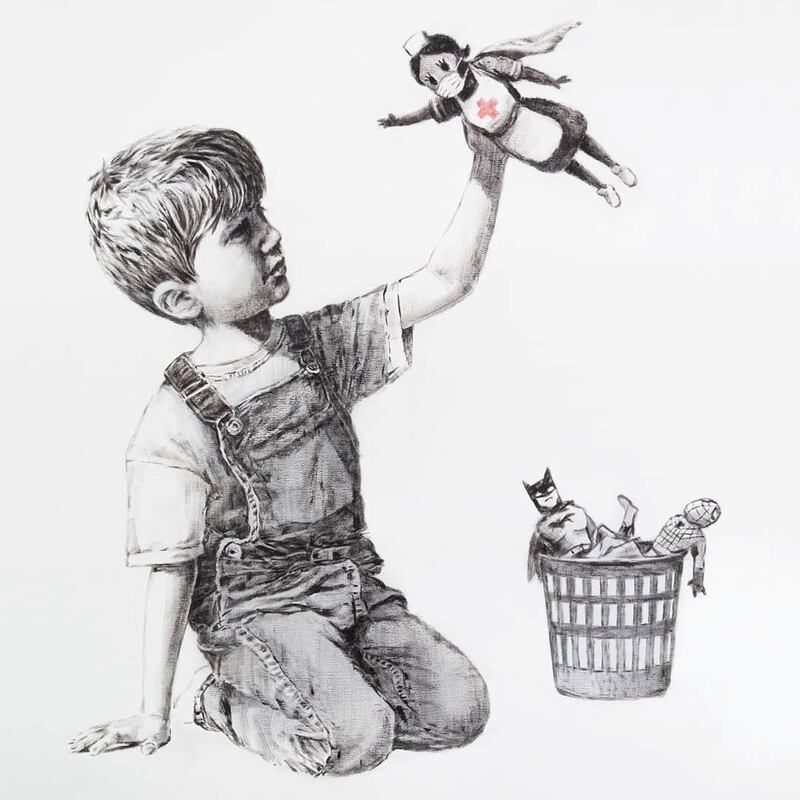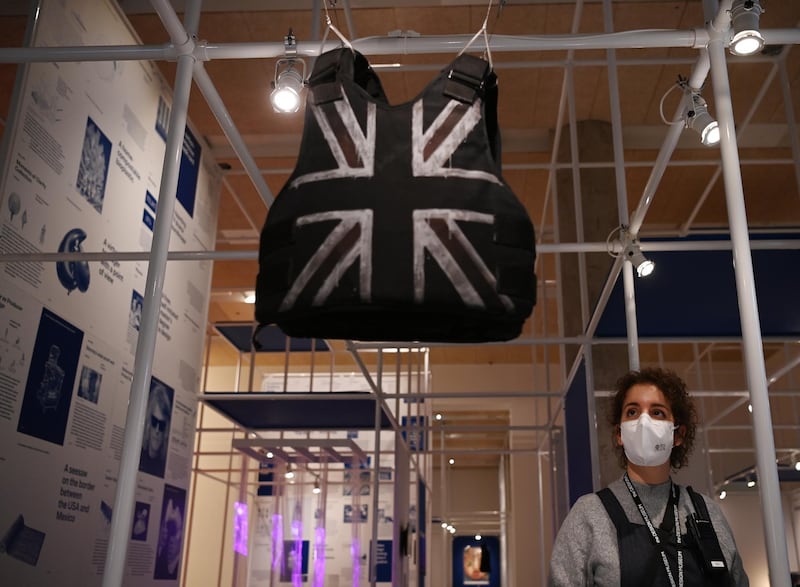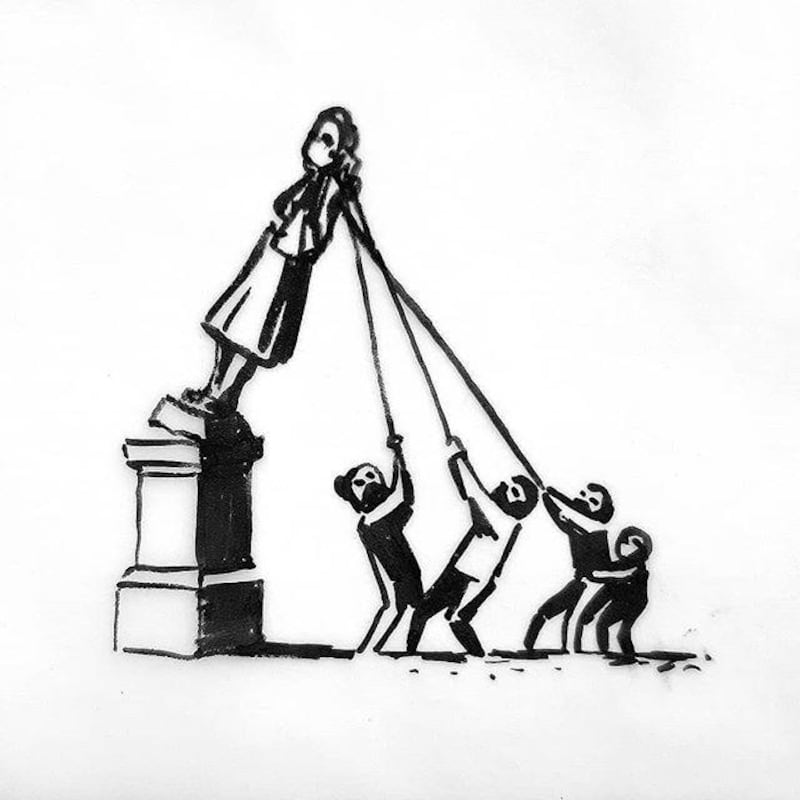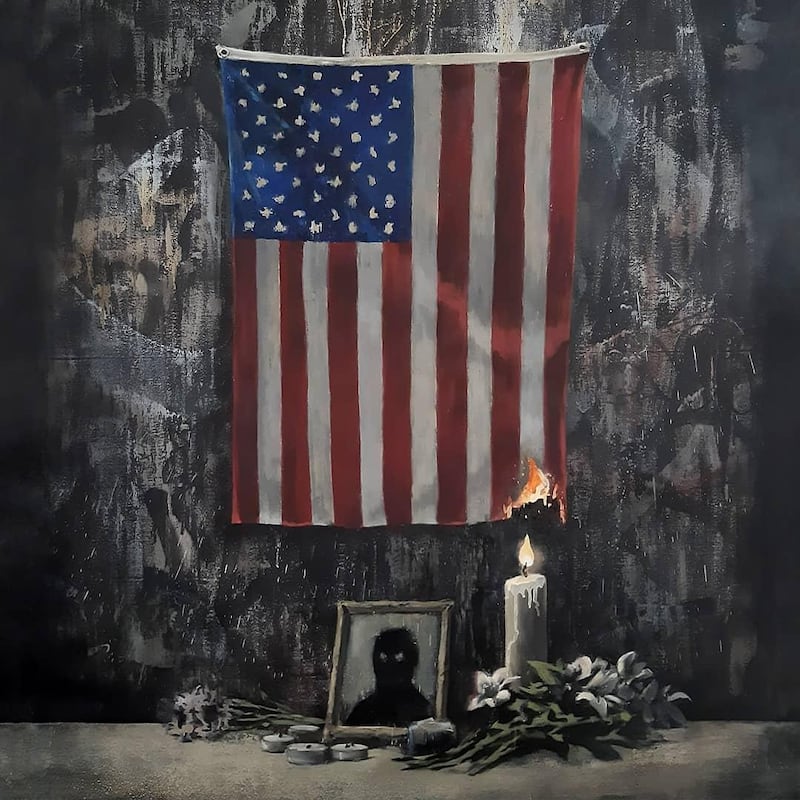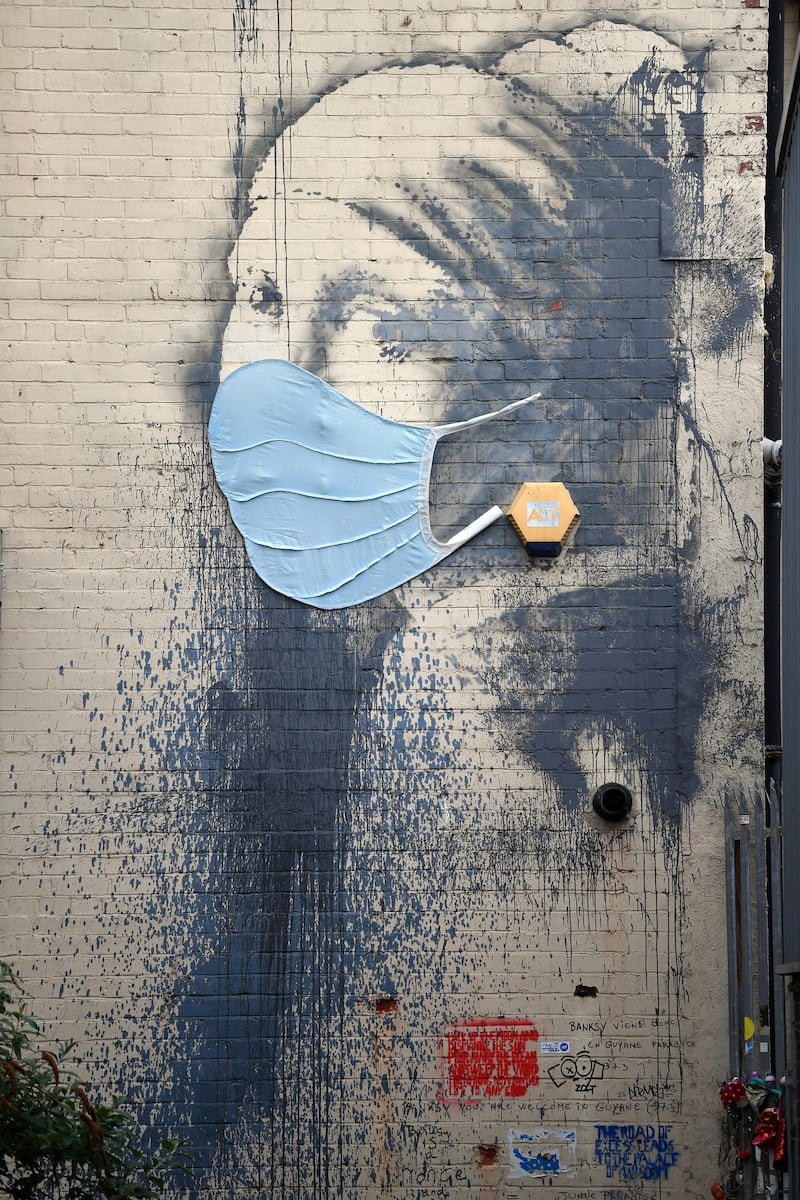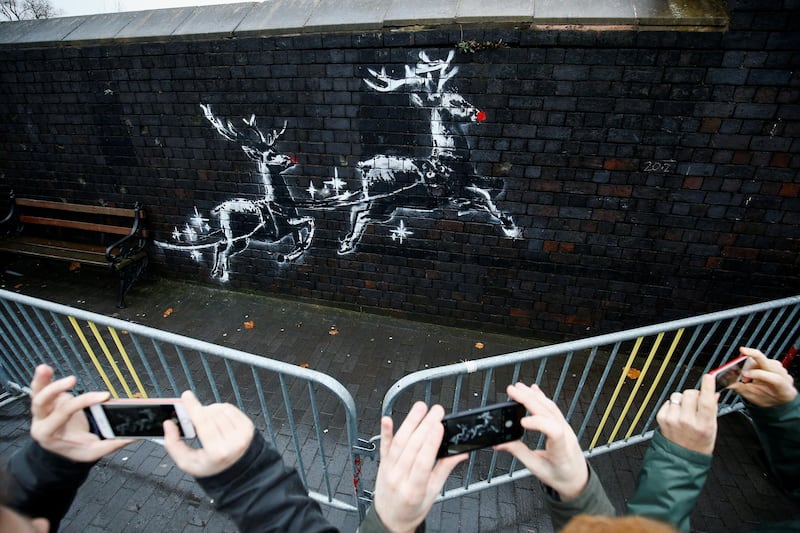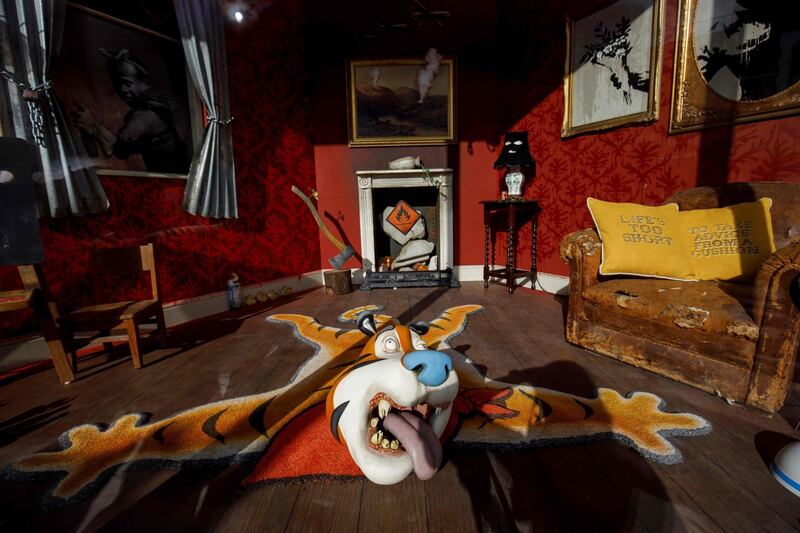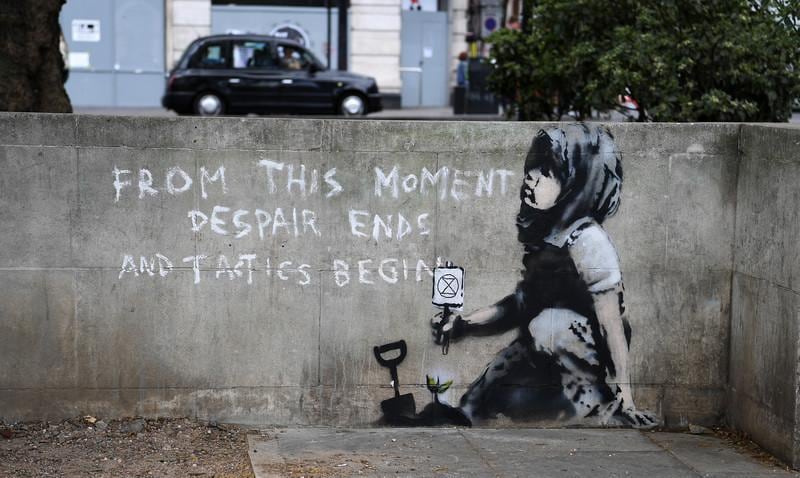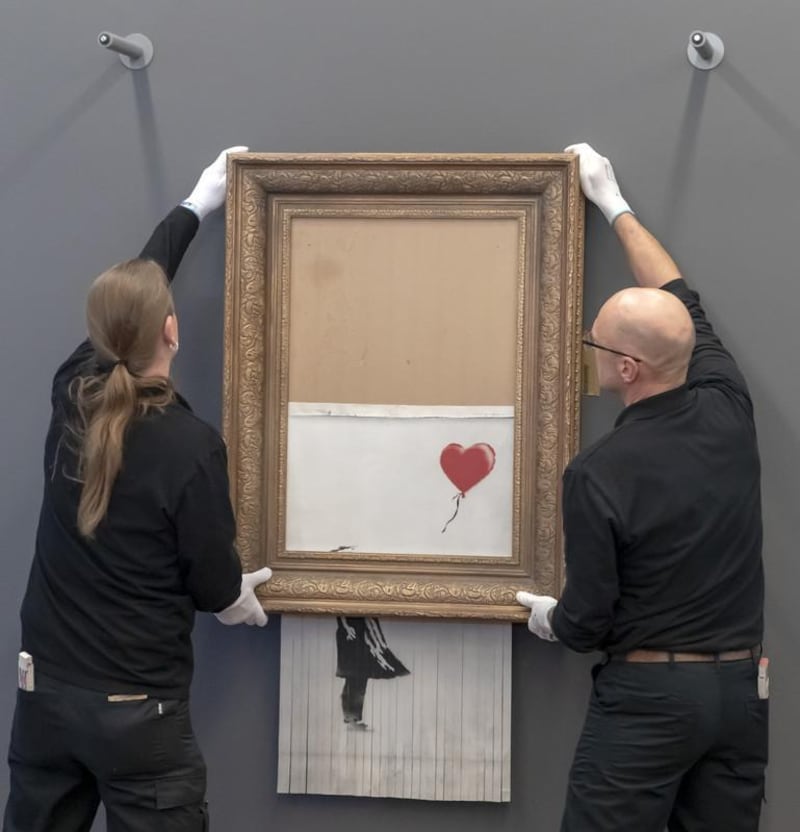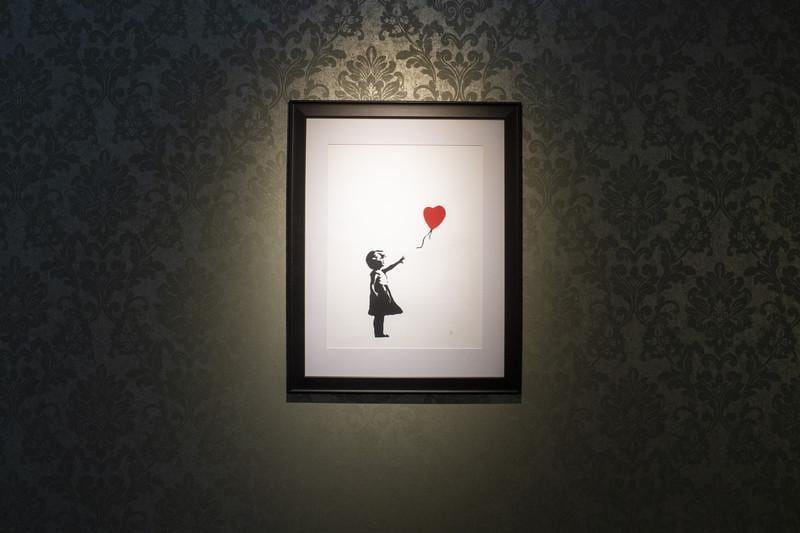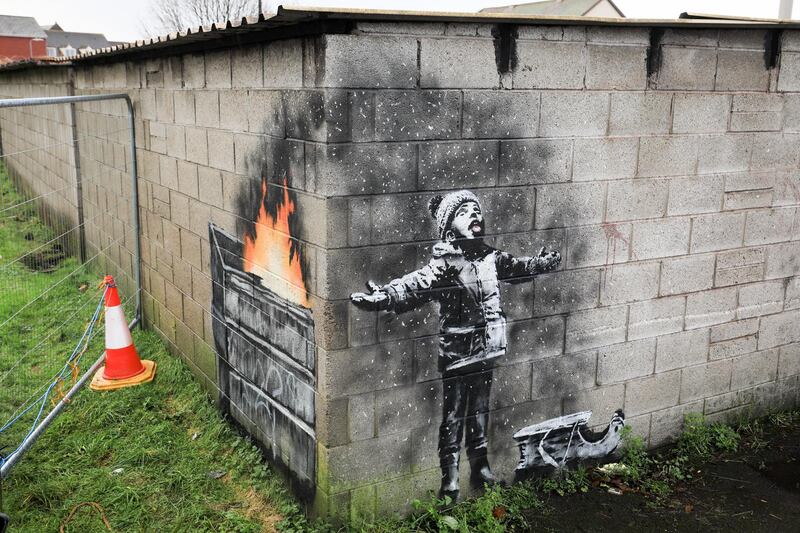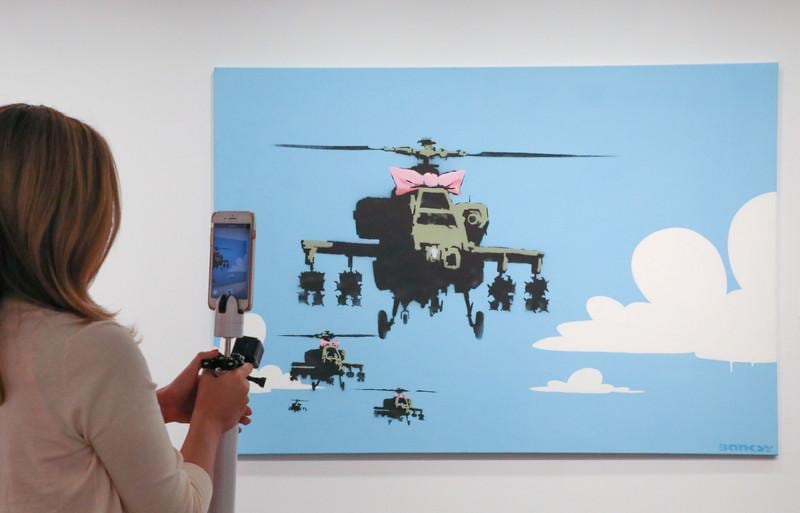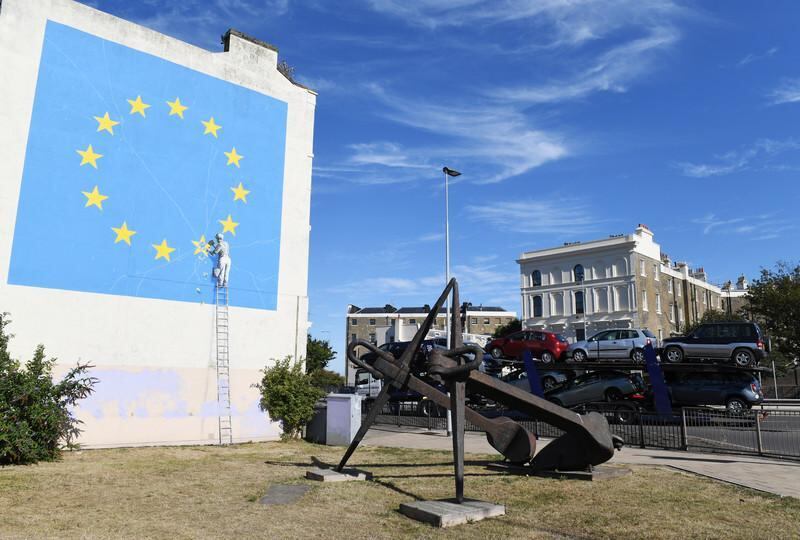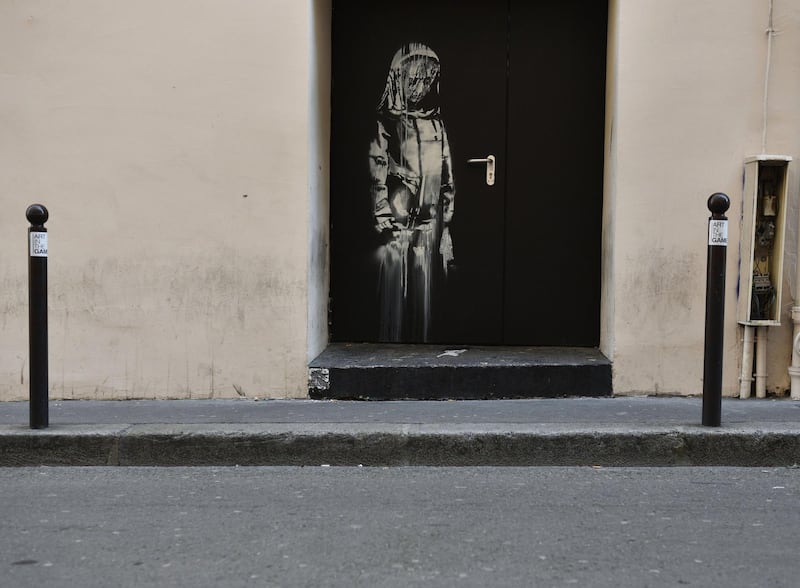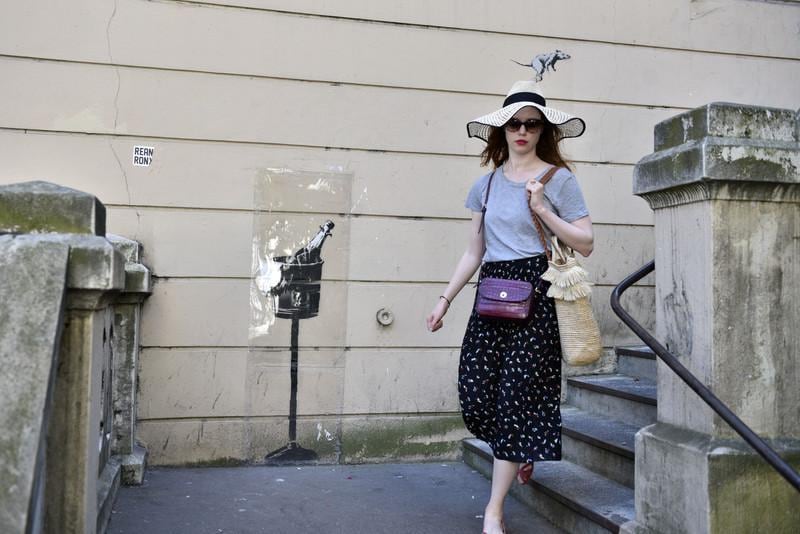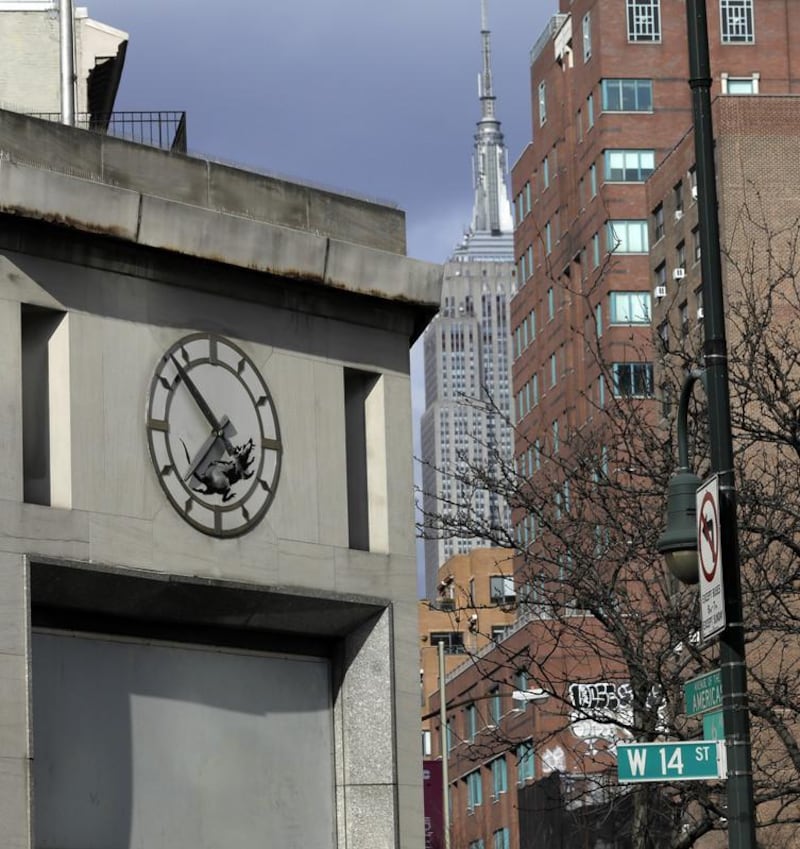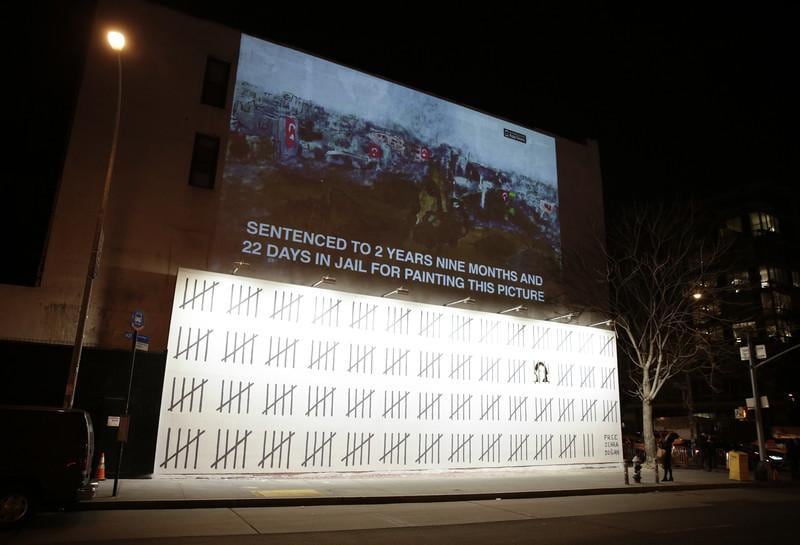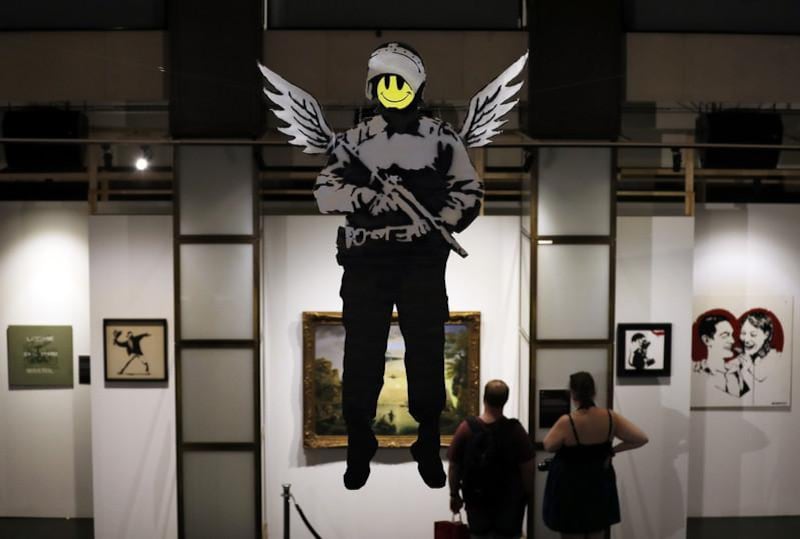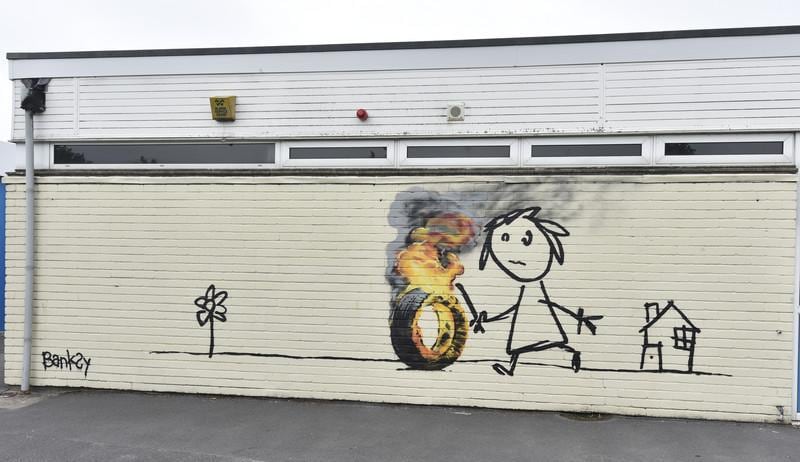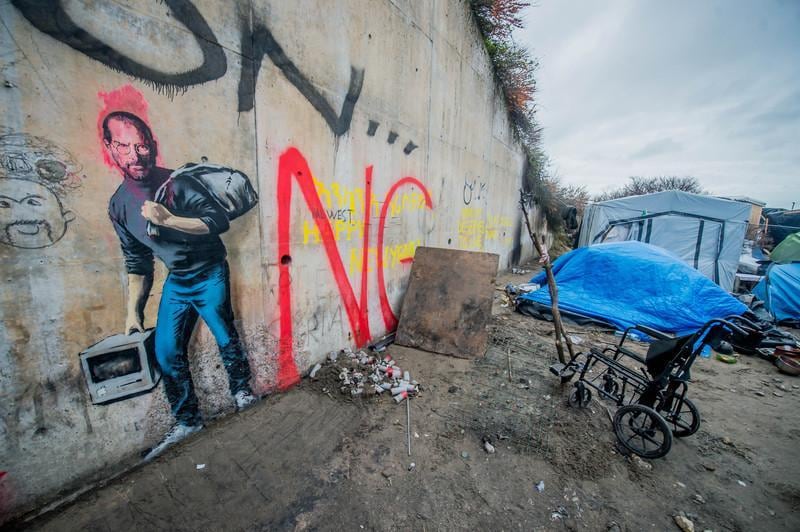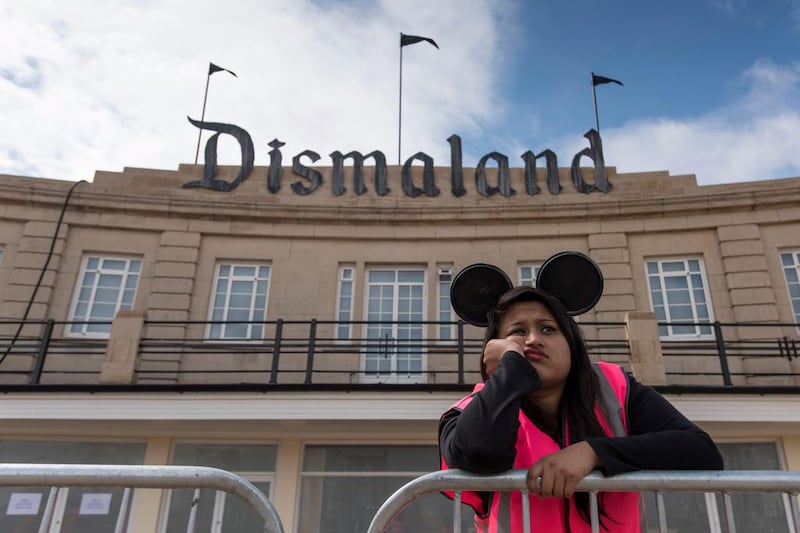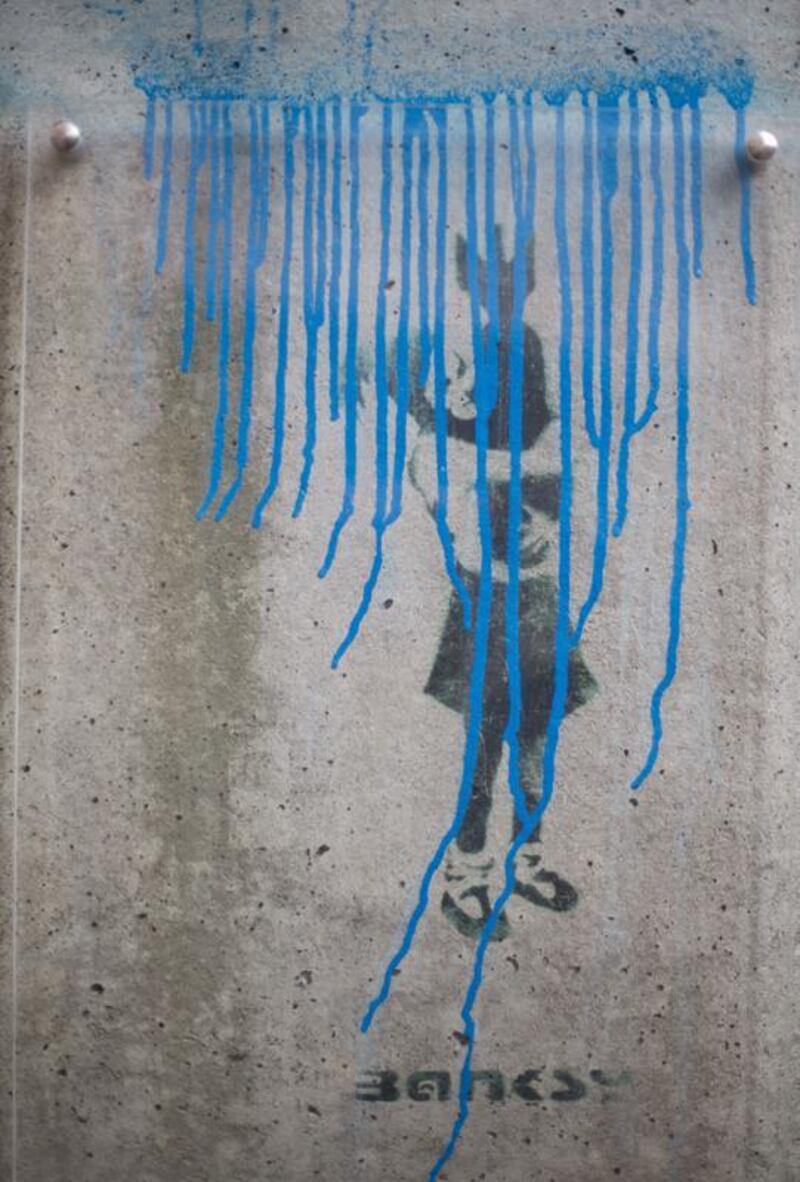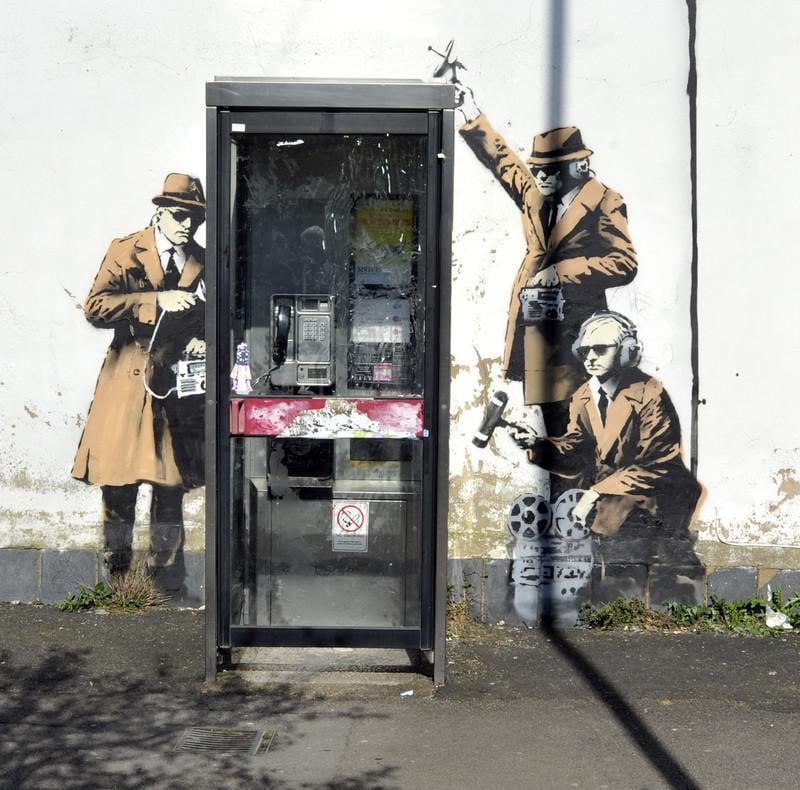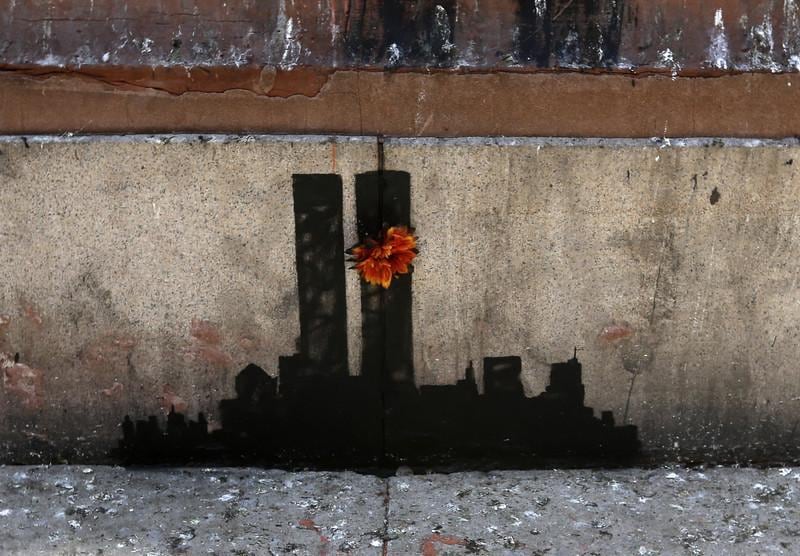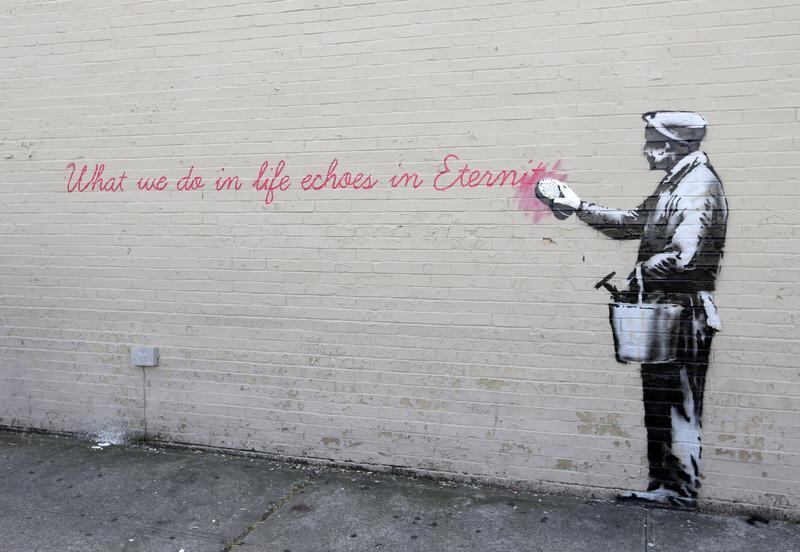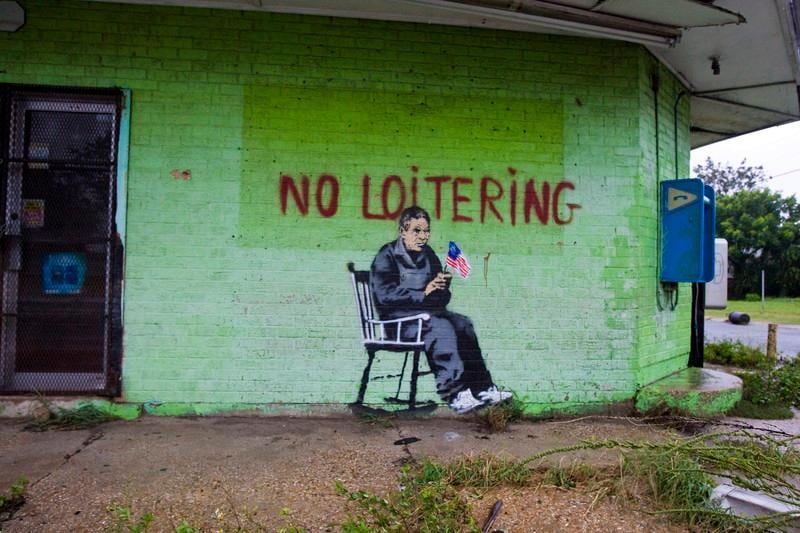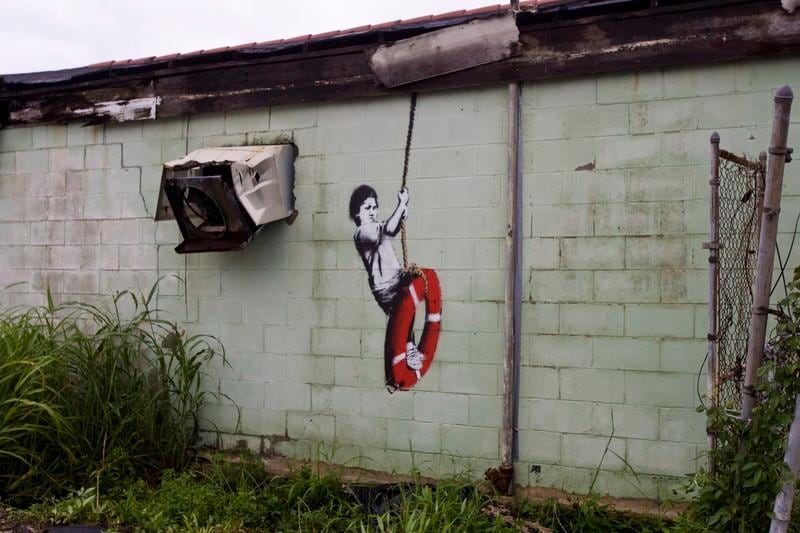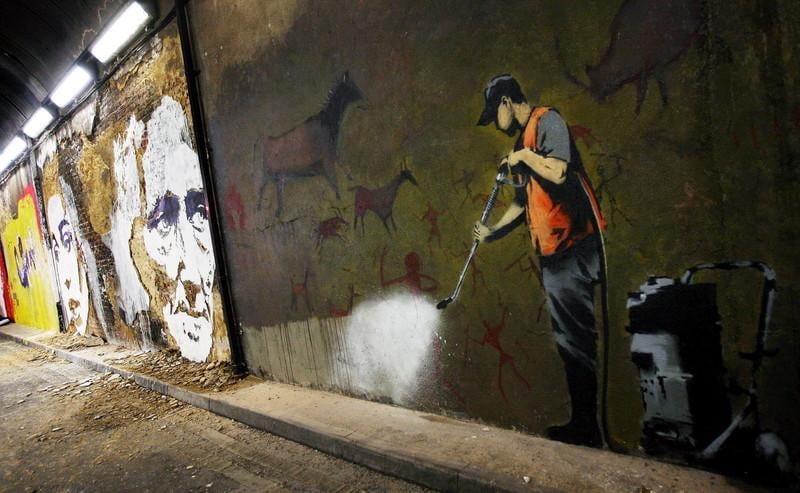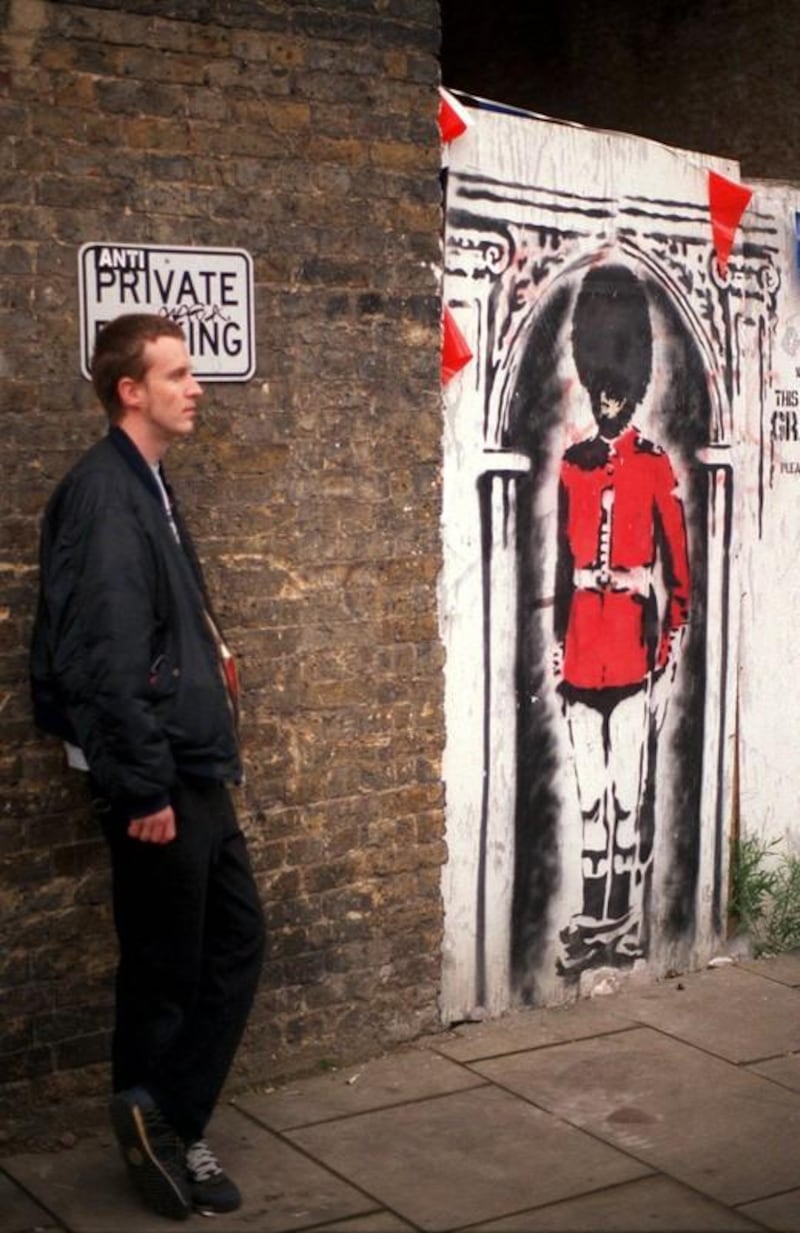Banksy might be one of the most famous names in the world of art, but for the person behind the tag, it’s a different story.
The elusive artist's latest mural appeared overnight in London earlier this week. The work carries an environmental message, making the point that it is up to humanity to save nature.
With the appearance of his latest work, Banksy’s identity has once again sparked much debate.
The street artist, whose thought-provoking works have appeared in almost every corner of the globe, could stroll past you in the street, and you would be none the wiser.
Banksy has managed to maintain anonymity despite years of making global headlines, thanks to a combination of careful planning and a trusted inner circle.
But, if you look hard enough, there are a few details out there about the elusive artist.
Who is Banksy?
Banksy is a street artist whose works have appeared all over the world, and sold for millions at various auctions. Banksy's identity has never been confirmed by the artist, and his work is usually shrouded in mystery. Once artworks appear, Banksy usually lays claim to them via his official Instagram page. His works often focus on topical societal issues, and make strong political statements.
What do we know about Banksy for sure?
We know that Banksy is from the city of Bristol, the UK, where he cut his teeth as a young artist spraying his tag across the city in the 1990s. He later moved into more sophisticated and politicised works, before going on to become the street artist we know him as today.
His earliest large-scale mural is The Mild Mild West, painted in 1999 in Bristol's Stokes Croft. The work depicts a teddy bear throwing a Molotov cocktail at three riot police, and was painted by the artist over the course of three days in broad daylight. It is still visible in the city today, alongside a number of his other works.
In a 2006 (anonymous) interview with Swindle magazine, Banksy said: "I came from a relatively small city in southern England. When I was about 10 years old, a kid called 3D was painting the streets hard. I think he'd been to New York and was the first to bring spray painting back to Bristol. I grew up seeing spray paint on the streets way before I ever saw it in a magazine or on a computer.
“3D quit painting and formed the band Massive Attack, which may have been good for him but was a big loss for the city. Graffiti was the thing we all loved at school. We did it on the bus on the way home from school. Everyone was doing it.”
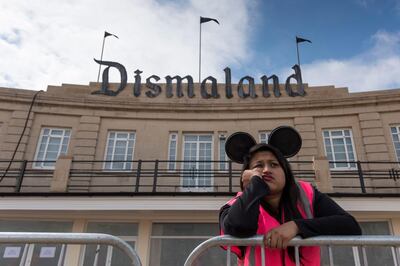
Banksy's work has taken him to Paris, New York and Bethlehem, where he opened the Walled Off Hotel in 2017, which directly faces the eight-metre-high concrete wall built by Israel to separate the Palestinian territories.
It’s not the first time Banksy has taken his work off the wall. In 2017, he opened Dismaland Bemusement Park in the seaside town of Weston-super-Mare, close to his home city of Bristol, which featured working rides sitting alongside classic Banksy artworks.
The theories surrounding his identity
Robin Gunningham
There are many theories surrounding the identity of Banksy, but the most prominent one suggests that the artist is a man by the name of Robin Gunningham.
Gunningham was born in 1973 in Yate, just outside of Bristol, and many former schoolmates say they believe him to be Banksy. Gunningham was said to have been a talented illustrator at school, often drawing cartoons, and indeed Banksy has confirmed that his love for drawing first manifested during his school years.
An image taken in Jamaica of Gunningham with a spray can and stencils, widely circulated and suggested to be Banksy, is what first fueled speculation that he could be the elusive artist.
The rumour is so strong that, in 2018, an original work attributed to Robin Gunningham, thought to be the only one he put his name to, sold at auction for £4,000 (Dh18,500) – a fair amount for an otherwise unknown artist. The work in question was an illustrated album sleeve for Bristol-based ska band Mother Samosa's Oh My God It's Cheeky Clown, and bears resemblance to Banksy's earlier graffiti style.
In 2016, criminologists at Queen Mary University even used geographic profiling usually reserved for linking criminals to crimes to try to link Gunningham to works created by Banksy in London and Bristol. That research, however, was delayed after Banksy’s lawyers contacted the university with concerns over how the study, called Tagging Banksy, would be used and promoted in the press.
Neither Gunningham, Banksy nor his representatives have publicly commented on the theory – to confirm or deny.
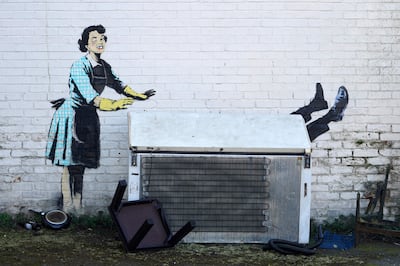
Robert Del Naja
Other prominent theories have named Massive Attack’s Robert Del Naja as Banksy. As mentioned above, Del Naja is already a graffiti artist and spent many years working in Bristol under the name of 3D, who Banksy cites as one of his earliest inspirations. The theory came about after DJ Goldie supposedly let Banksy’s name slip on a podcast while discussing the street artist. He said: “No disrespect to Rob, I think he is a brilliant artist. I think he has flipped the world of art over.”
However, that “Rob” could easily be Robin, too. The Del Naja theory was strengthened after fans were able to link two occasions where new Banksy works had appeared in the same city where Massive Attack were playing. However, unlike Gunningham, Del Naja has publicly denied the claims.
Jamie Hewlett
Other rumours over the years have claimed Gorillaz founder Jamie Hewlett is the man behind the artwork, after an anonymous forensic expert claimed paperwork reportedly showed him to be linked to every company Banksy is connected with. The artist has also produced work used in the band’s music videos in the past, adding further fuel to the fire. However, Banksy’s publicist denied these claims.
There have been many "sightings" of Banksy over the years, most recently he was spotted donning PPE while installing his latest work on the London Underground. Back in 2018, a passerby also claimed to spot him close to a recently installed work in the city of Hull. However, these sightings have not been enough to clearly make out his face. It is also unclear whether Banksy installs all his works himself, or uses a team to help.
Why does Banksy keep his identity a secret?
Despite Banksy’s high profile and the fact that people pay hundreds of thousands to get their hands on one of his works, by nature, a lot of what he does is in fact illegal. Banksy’s public works are usually done under the cover of darkness and without permission, and he usually only stakes claim to them long after the paint has dried.
While his anonymity of course adds an element of intrigue to his work, ultimately, it acts as a layer of protection for the artist, as in many places his work is classified as criminal damage. Also, given his status, it is likely his work would offer less impact if he was to garner a crowd as it was being installed.
A version of this article first appeared online on July 15, 2020
See some of Banksy’s most famous works in the gallery below
